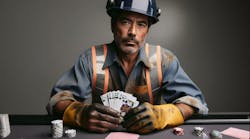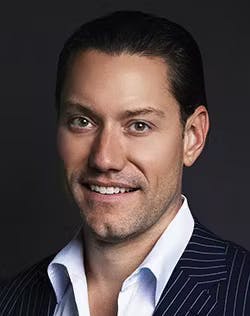The future of maintenance and reliability is a combination of hard and soft skills
Last January, ChatGPT and generative AI took the world by storm as the latest technologies of several poised to change manufacturing and heavy industry. To kick off the new year, Plant Services asked several expert practitioners and consultants to tackle questions on the ways that technology and market forces have shaped the M&R industry over the past 10 years.
Chris Pepin is the founder of Progressive Reliability, a manufacturing talent and consulting firm that is also a proud supporter of K9s for Warriors and Operation New Uniform. In this interview, Chris outlines several actions that organizations can take to achieve recruiting success, and explains why that communication skills (especially multilingual) are increasingly valuable and necessary for maintenance and reliability professionals.
1. How has the core skill set (and/or toolbox) of the average mechanical plant millwright changed over the past 10 years?
I would say for the average millwright, the mechanical/technical piece hasn’t changed very much in five years. Let's face it, we've still got plants with equipment going back to the 1930s. I think right now, the biggest challenge is doing more with less. People are asked to operate at a higher activity level with less trust. With the amount of turnover continuing in so many places, you’ve got to be able to interface and adapt to new people more often. Doubly so if you’re going to stabilize by curating an environment that’s worthy of commitment.
Also, the challenge is often more environmental than technical. We're working with a lot more bilingual sites, which isn't the core skill set you're probably thinking about, but it’s certainly an environmental change that's going on. We've worked with plants that are Spanish-speaking only. You're going to have language barriers going on – northeast, southwest, south, you name it.
2. How has the core skill set (and/or toolbox) of the average reliability manager changed over the past 10 years?
With reliability, the fundamentals are still the fundamentals, more now than ever. There's no new technology that's going to replace the importance of asset criticality and asset hierarchy. It doesn't matter how great the promise of your new industry X.0 equipment is for productivity, the fundamentals remain. I think, in fact, as you add connectivity complexities and digital intervention in the environment, the ability to focus on the fundamentals of reliability have become even more important. Because of this, we have more large corporate clients right now that are committed to top-down reliability initiatives, so as reliability engineer you have a big seat at the table.
The other thing is leaders today are working with three to four generations on-site at the same time. We've got Boomers, Gen X, Millennials, and Gen Z; so that creates a lot of viewpoints to manage. Diversity of thought and diversity of perspective is a major reality today, so the importance of communication and the importance of buy-in has expanded beyond previous years.
3. What kinds of Industry 4.0 technologies do you consider to be table stakes for current maintenance and/or reliability professionals?
We're still way early in the adoption curve of Industry 4.0, and it comes with specialty roles. So, things have started showing up on your electrical and instrumentation (E&I) side. We’ve seen these new technologies change the asset hierarchy and criticality significantly, because suddenly there’s a new interface that’s driving complications with complexity. We recently toured a facility that had multiple machines down in each of 6 locations because of server issues completely unrelated to the site. That’s quite a contagion. So, the more unified the technology gets, the more widespread the issues become, and the more important it becomes to reassess your hierarchy.
IoT is in the adoption curve where things are picking up significantly. AI appears to be somewhat behind IoT, likely not for long. I believe AI is going to come up quick and make a refreshing impact on information access, knowledge capture and completely disrupt how we do training.
4. Which industry verticals, if any, tend to be quick to embrace newer technologies like IoT or AI? (this can include public utilities)
Among our clients, we’ve found early adoption is driven more by management culture and niche application maturity than industry vertical. So you're generally going to have individual champions, a specialized use case, or you're going to have a culture of innovation and each must be underpinned by the temperament to work through adoption and into optimization.
5. When new condition monitoring or asset management technologies are introduced, which members of the team are the ones driving these projects? Does it make a difference if the new technology is hardware or software?
With anything like this, you've got to be thinking about adoption, change management and process improvement, together. And, again, successful adoption is heavily influenced by how high the champion needs to be in the organization, and who shares the vision for its adoption.
The next piece is, who is empowered and how well are they empowered to get it running? How are they equipped to manage the “testing an iteration” events? And how much meddling is involved? For example, with an ultrasound probe, there's not a lot of meddling. You can go in, and you can physically see (or hear) something happening and gain those quick wins. The more complex the solution and the more teams or cultures involved, the longer the dark tunnel will be until you see the light.
We’re working on a project right now, a massive CMMS migration along with some new site acquisitions, that we're doing systems integration work for. Fortunately, this client understands there is no shortcut to positive outcomes, because the quality of the information in the CMMS is the power of the CMMS. That's one difference between hardware and software. A lot of times hardware is super fun and you can see the return immediately. Handheld tools have the cool factor. With software, the quality of the design, build, information, and adoption all directly affect whether it succeeds. There’s a lot of decisions and a lot of scrutiny.
By the way, let’s be real, it’s an extremely small tribe of visionaries who truly enjoy the software implementation process. And sometimes diagnostic hardware can create disruption in fiefdoms because suddenly, this new thing is seeing the unseen, and people or teams can sometimes express defensiveness about it. There are varying degrees of cultural awareness that will be required, and making sure to curate a frame for empowering your workforce on a unified vision is the fundamental thing that we’re always looking for.
6. In your opinion, what are one or two things that would make an impact in alleviating the hiring challenges currently associated with the M&R job market?
Number one, despite all the data, despite all the challenges, despite all the stories, there are and will continue to be companies that are incredible at hiring. We have a belief about success in America, and it's that “anyone can be successful here,” which is at the core of our American dream. The reality is, successful people do come from anywhere, any background, any set of circumstances, and we see it all the time. But anyone isn’t going to be everyone because one must be willing to do what is required. It's the same thing with hiring: any company can do it well, but not every company will. Is your team willing to make the sacrifices other’s wont in order to win? If hiring is a priority, you can win. If hiring is one of your top three priorities, you can win. It may be useful to consider a saying we use in setting our goals here - if you have more than three priorities, you have none. The tasks will be many – the priorities should be few.
The next thing is, you must use every option, often, at scale. If you want to do the process you've been doing for eight years, you're going to find that you're only getting maybe 20% of what you used to get back then. However, if you're willing to adopt the full set of talent tools and tactics, then not only will you get better, you become a magnetic organization in the process. Hiring a great talent vendor? It can certainly be a supportive piece of your mix, but you still must demonstrate value & carry momentum. The opportunity to stand out right now is better than it's ever been, because quality people find each other within the noise. If you rise with real value, even a little bit, you'll get outsized returns because of how powerful digital networks have become.
Finally, the biggest talent secret that I can share is that 70% of great hires come from internal referrals. When you have great people, they attract great referrals. When you have mediocre people, they attract mediocre referrals. Make sure you're working for & rewarding the referrals you want. Be relentless about it. We want to see great teams doing the right things so they can get the best people. It’s why we publish our processes in public. Meaningful work is essential. When great people have great jobs we make a big beneficial impact on our families, communities, and country.


